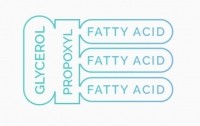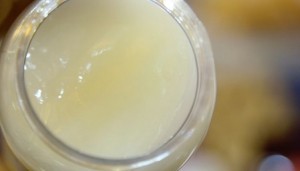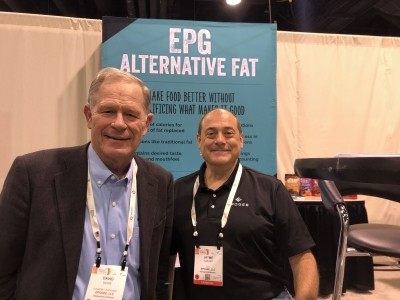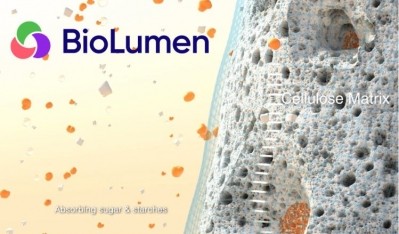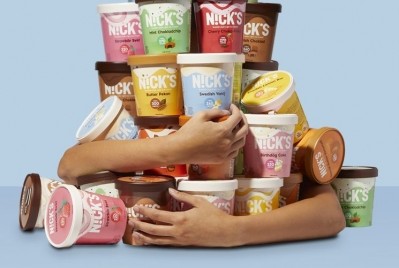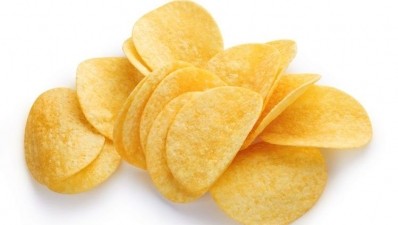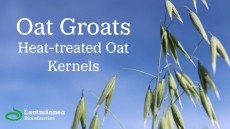Fat alternative Epogee gains traction: ‘The low-fat ship sailed 25 years ago... this is not about low fat, it’s about caloric reduction’
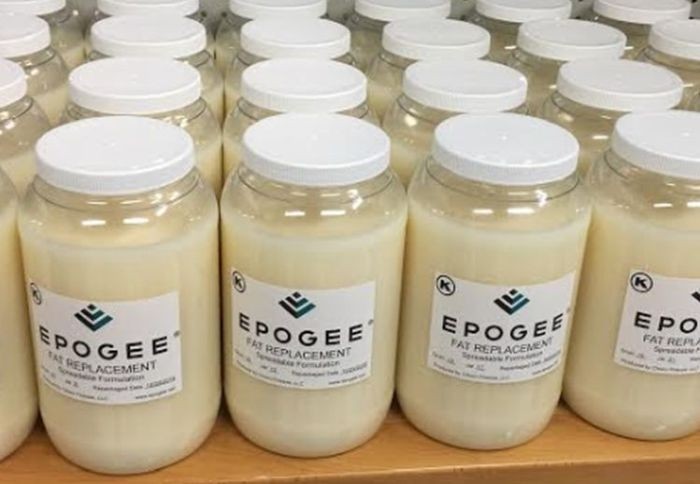
Products already on the market containing Epogee include enrobed caramel clusters and a fast-growing low-calorie ice cream brand delivering a “super-premium creamy mouthfeel,” Epogee chief commercial officer Jayme Caruso told reporters in a briefing on Wednesday.
“We have a customer about to launch a peanut spread and a chocolate hazelnut spread with EPG and we expect to see many more products hitting the market with EPG in the coming months.”
Connect with Epogee at the virtual IFT show July 13-15.
Ingredients listing: EPG (modified plant-based oil)
EPG (esterified propoxylated glycerol) – which be listed on food labels as ‘EPG (modified plant-based oil)’ - can be used to replace up to 85% of the fat in scores of applications from confectionery to baking mixes, said Caruso, who said the FDA had just confirmed it had no objections to extending a GRAS determination for EPG to include potato chips, corn-based savory snacks, chicken nuggets, plant-based protein products, dairy analogs, and beverages/beverage bases.
1g of Epogee contains 0.7 calories
To make EPG, the company splits rapeseed oil (although other vegetable oils can also be used) into glycerin and fatty acid, inserts a food-grade link, and reconnects them (see box below for details).
The modified fat (EPG) has a high melting point of 102˚F, which means that it doesn’t liquify when it passes through the body (which typically has a temperature of around 98.6˚F) and has “the consistency of soft candlewax,” Caruso told FoodNavigator-USA.
It largely resists digestion because digestive enzymes are prevented from breaking it down, so hardly any of its calories are released, added Caruso, who is talking to potential partners from leading CPG brands to ‘disruptive’ startups.
To put this into perspective, 1g of fat contains 9 calories, while 1g of Epogee contains 0.7 calories.
No messy side effects…
Unlike Olestra (which had a lower melting point and messy side effects) or fat replacers made from sugars, gums, starches or fibers (which provide bulking, humectancy and mouthfeel but many firms don’t want to include on the ingredients list), EPG functions like fat in food products and in the human body because it’s made from fat, said Caruso.
“In a nutshell,” he said, EPG is unique in the food formulation space because it’s an “alternative fat, not a fat ‘substitute’… EPG looks feels, tastes, and functions like fat because it’s made from fat, it just doesn’t deliver the calories.”
‘EPG looks feels, tastes, and functions like fat because it’s made from fat’
While fat reduction and replacement might have been all the rage in the 80s and 90s, consumers today – some of whom are actively embracing high fat keto diets – are more worried about sugar, acknowledged Caruso.
But they’re also worried about their weight, and they are still paying attention to calories, and given that fat contains a lot more calories per gram (9) than carbs or protein (4), it is “the easiest target to drive calories out of products,” he said.
“The low-fat ship sailed 25 years ago, but this is not about low fat, it’s about caloric reduction.”
‘There is currently nothing like this is on the market’
And if food culture has undoubtedly changed since the technology behind EPGs was first developed three decades ago, most Americans are still consuming more calories than they are burning off, and many of them come from fat, added Caruso.
‘There is currently nothing like this is on the market. We have two products, a confectionery EPG with a very sharp melting curve designed to mimic cocoa butter or fractionated palm kernel oil, and our workhorse spreadable EPG, which works in all of the other applications.”
As to whether EPG would be considered ‘clean label,’ there’s no simple answer as this is not a legally defined term, said Caruso, although he conceded that some natural and organic brands might not be interested.
However, brands that are trying to appeal to calorie-conscious consumers are particularly excited by Epogee's potential to cut calories but also eliminate ingredients such as gums, starches and binders, preservatives and flavor enhancers that are often used in low calorie or low fat foods, he said.
The road to commercialization
The road to commercialization has been lengthy for EPGs, which were first developed in the 1980s by ARCO Chemical Company, which teamed up with Bestfoods to explore their potential as fat replacers in foods.
However, Bestfoods withdrew from the joint venture shortly thereafter, and work did not resume until late 2003 when the technology was assigned to a non-profit affiliated with Kansas State University. A new partner, Choco Finesse, LLC, was later granted development rights and changed its name to Epogee.
'Not another Olestra'
Epogee is not another Olestra (a hybrid molecule of sucrose esterified with eight fatty acids from Procter & Gamble that attracted a wave of negative PR over its messy side effects... notably anal leakage), says founder and CTO David Rowe.
"We got to learn from their experiences and essentially avoid some things that they did… but we also have better chemistry. Our product is safer in terms of things like vitamin depletion [Epogee does not inhibit the absorption of fat-soluble vitamins], but another key thing is that Epogee is made from fat and tastes like fat.
“Olestra had kind of a weird mouthfeel and for people old enough to remember the potato chips, they didn’t quite taste like potato chips, but French fries or donuts made with Epogee will actually beat regular French fries or donuts [on taste/mouthfeel].”
What are EPGs?
EPGs are a family of fat- and oil-like substances that resemble triglycerides in structure and appearance, but have been modified to prevent or limit their digestion when consumed in food.
How is Epogee made?
*According to a GRAS notice submitted to the FDA in 2015, esterified propoxylated glycerol (EPG) is produced by a three-step process: First, fats and oils are split into glycerol and fatty acids. Next, glycerol is reacted with propylene oxide to produce glycerol with propylene glycol units (PGUs) inserted on its hydroxyl groups. Finally, the propylene glycol-substituted glycerol is reacted with fatty acids to produce EPG, which largely resists digestion because the PGUs prevent the digestive enzyme lipase from breaking down the fat.
Is it safe?
The FDA has no questions regarding the GRAS status of EPG for multiple food applications including confectionery products; frying; baked goods and baking mixes; frozen desserts and mixes; nut products (including peanut butter); grain products; pasta; granola and snack bars; sauces and gravies; soft candy; snack foods (potato chips, corn-based savory snacks, chicken nuggets); plant-based protein products; dairy product analogs; beverages/beverage bases; coffee, and tea.
EPGs have been evaluated for safety at levels as high as 150 grams per day.
How is it labeled?
Epogee - the brand name for EPG (esterified propoxylated glycerol) – can be listed on food labels as ‘EPG (modified plant-based oil).’
While the word ‘modified’ might conjure up images of genetic engineering (which is not involved in its production), Epogee has not experienced any pushback from manufacturers or consumers on the name, claimed Caruso, who noted that ‘modified starch’ is a common term on food labels.
